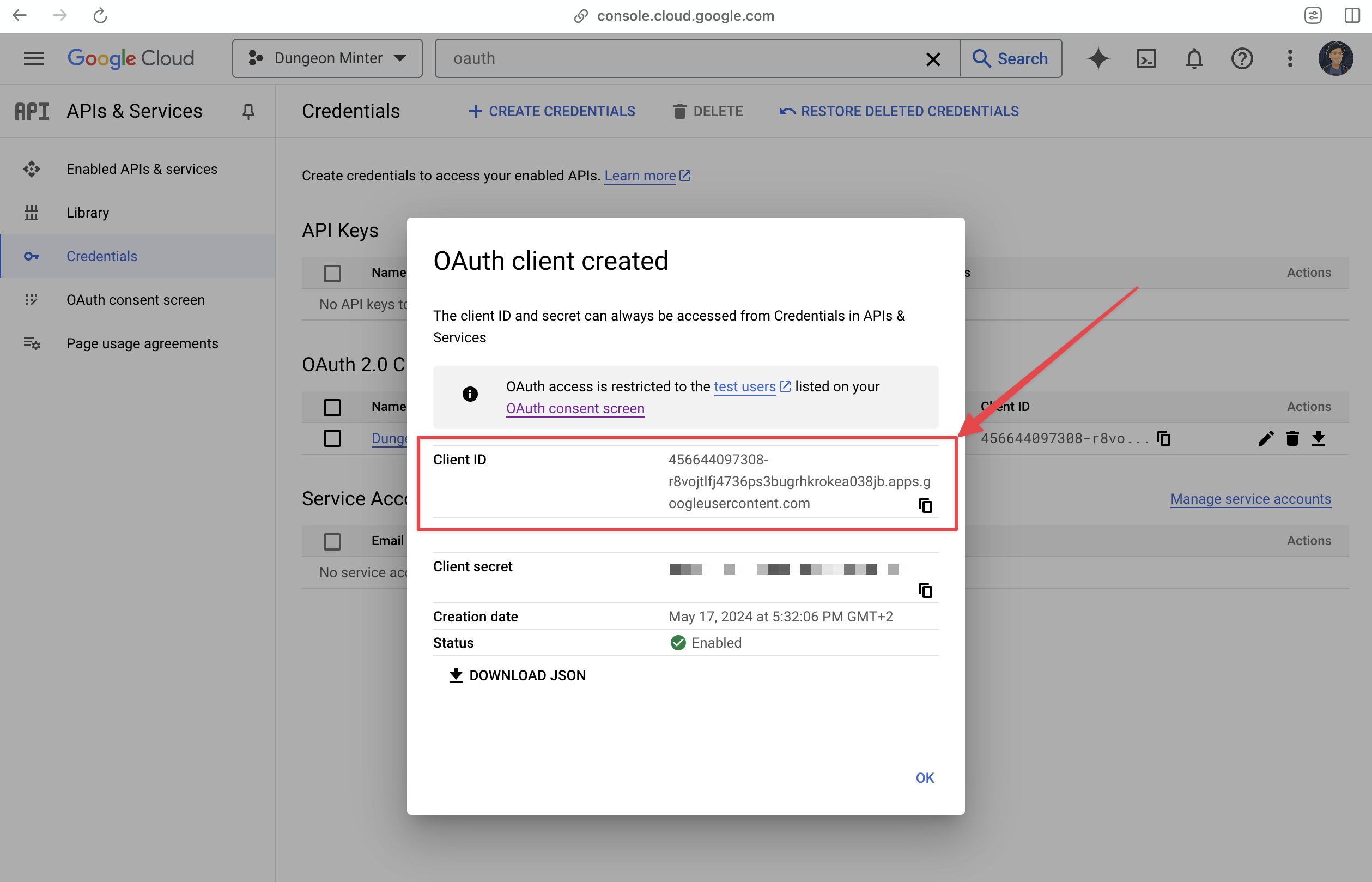Create OAuth Client ID
To start with, access the Google Developer Console and navigate to APIs & Services > Credentials. Once there, select Create Credentials > OAuth Client ID. If you haven’t yet, you might have to also configure your OAuth Consent Screen to be able to move forward.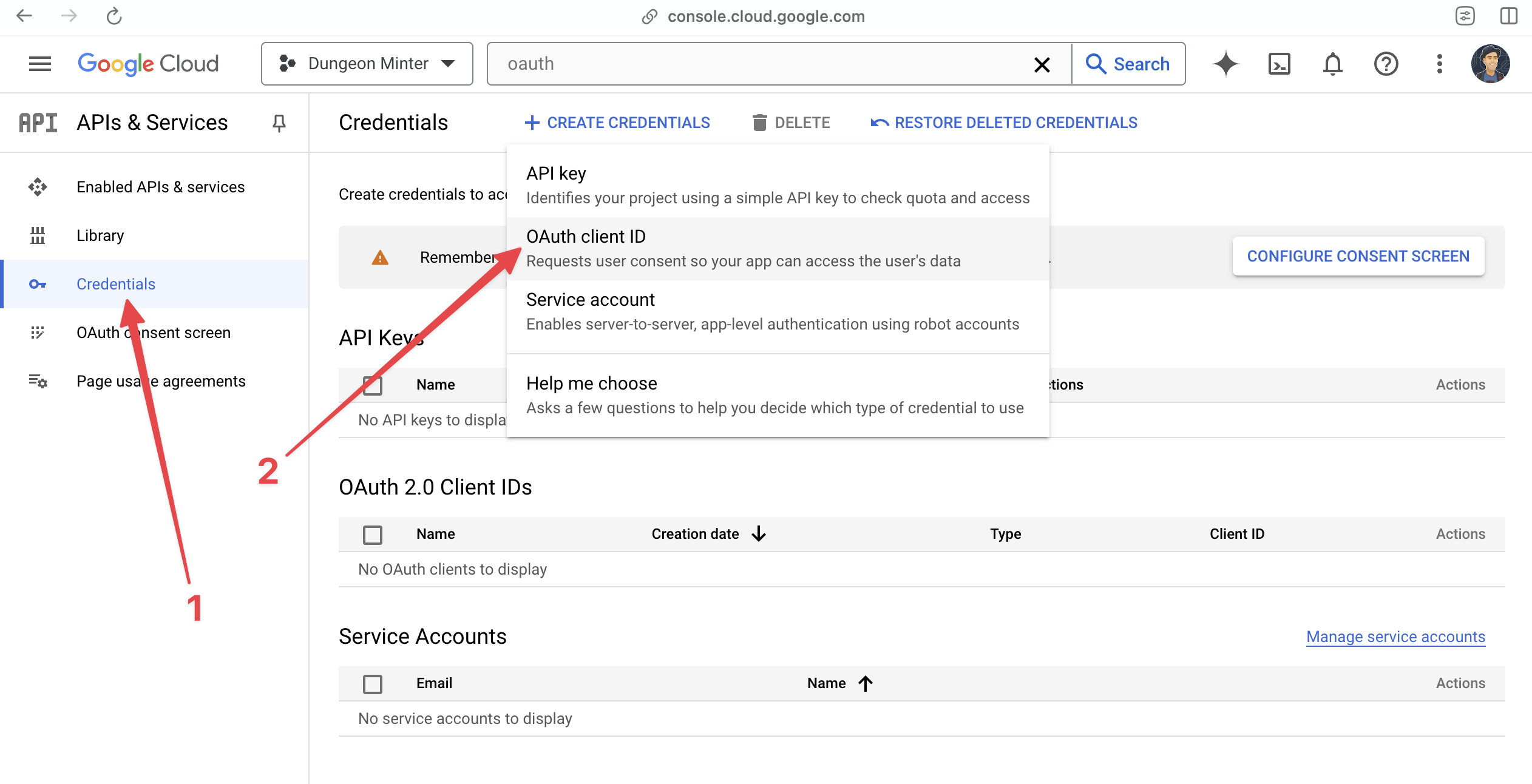
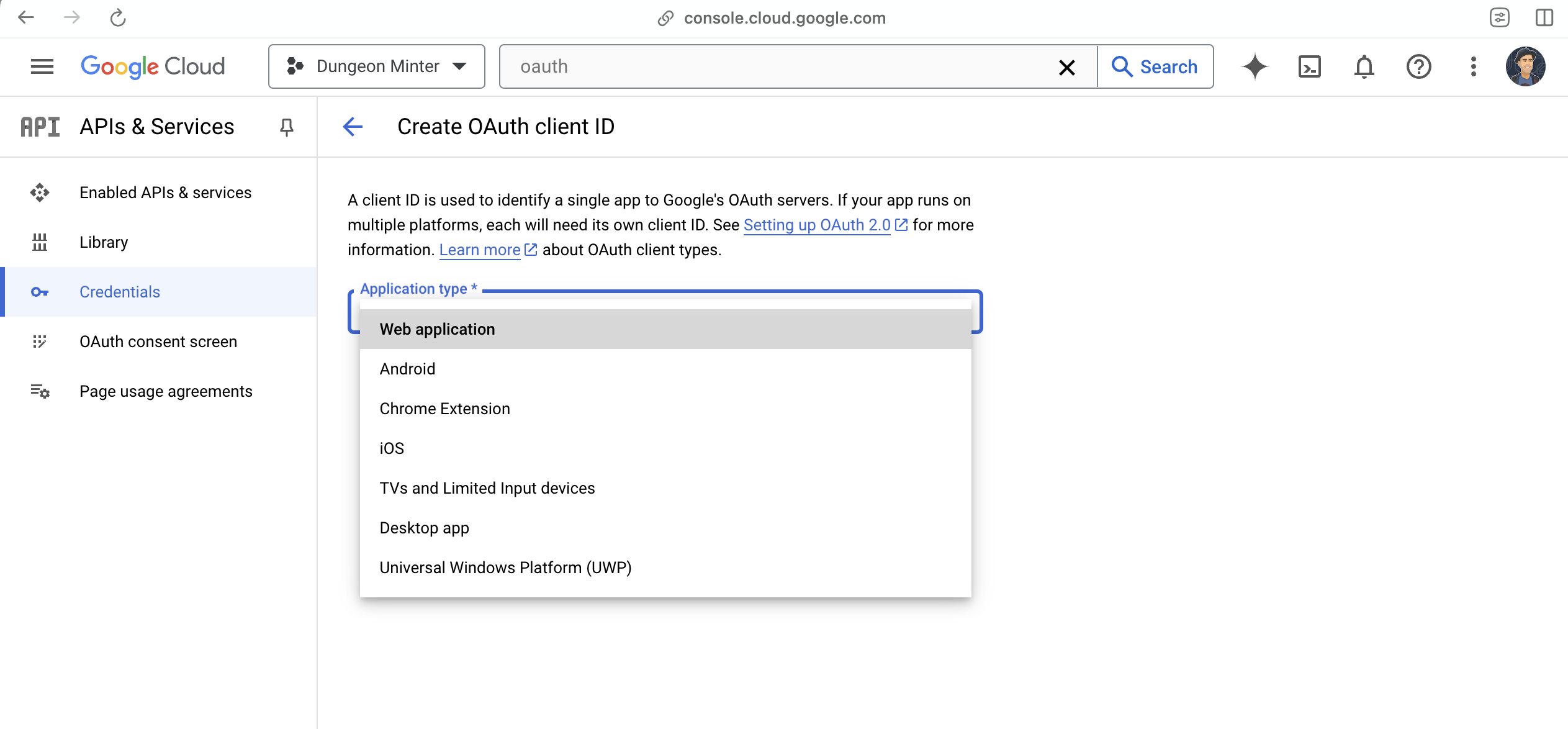
Configure Web Application
If you are configuring your Client ID for a web application, you must provide the following:- Application name
- Authorized JavaScript origins: A list of domains that will be whitelisted for interacting with this Client ID.
- Authorized redirect URIs: A list of redirect URIs that the user will be redirected to on successful authentication, Sequence SDKs will by default redirect to the same page that loads the SDK.
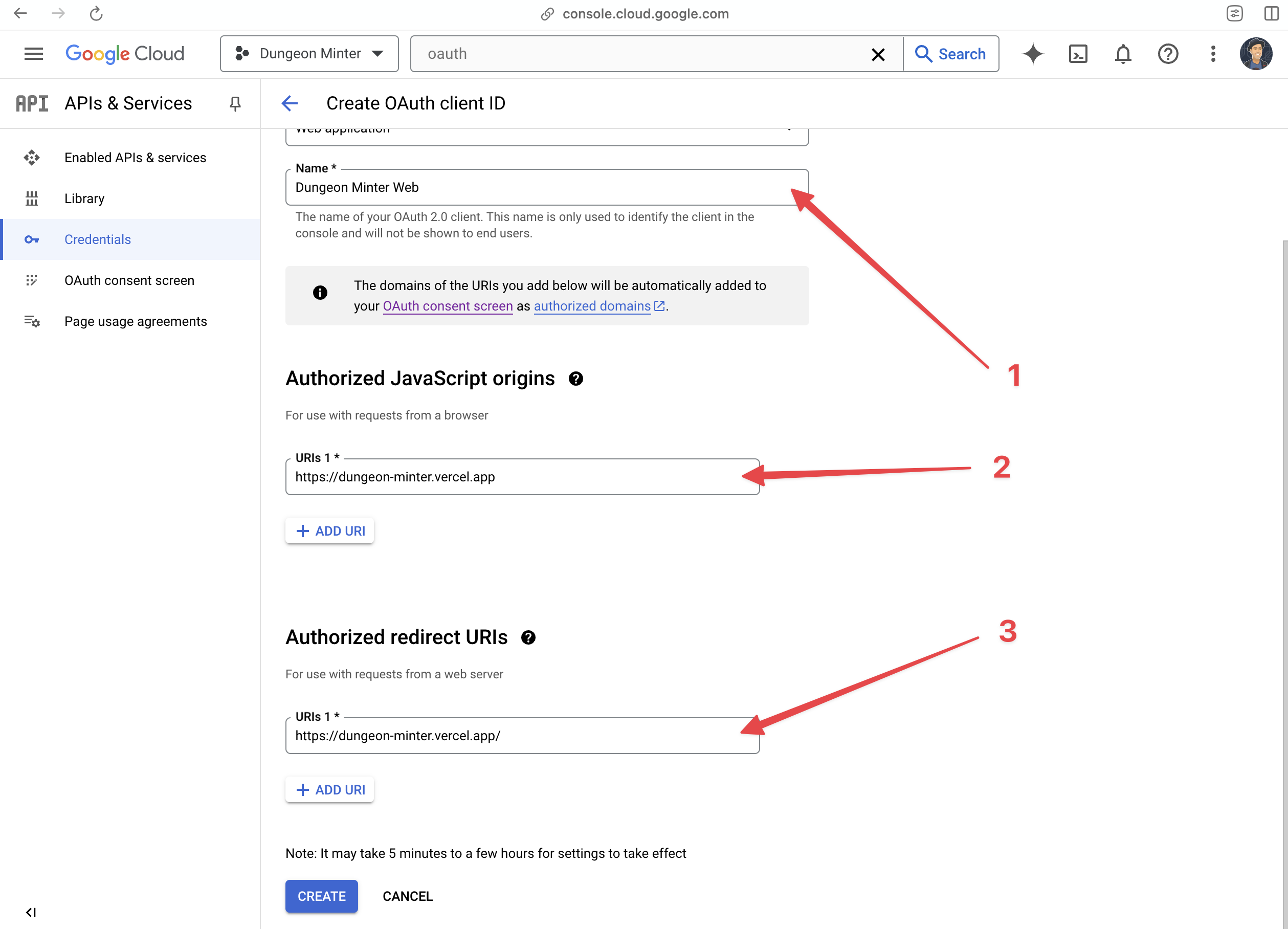
If you are adding a localhost address with a port (i.e.
localhost:4444) to the list of authorized origins, you must also add localhost only without the port name for it to work during testing.Configure Android Application
If you are configuring your Client ID for an Android application, you must provide the following:- Application name
- Package name: This is the unique application package name for your Android project.
- SHA-1 Certificate Fingerprint: This is the SHA-1 fingerprint for your application bundle, you can follow the instructions on the screen to generate this using
keytool.
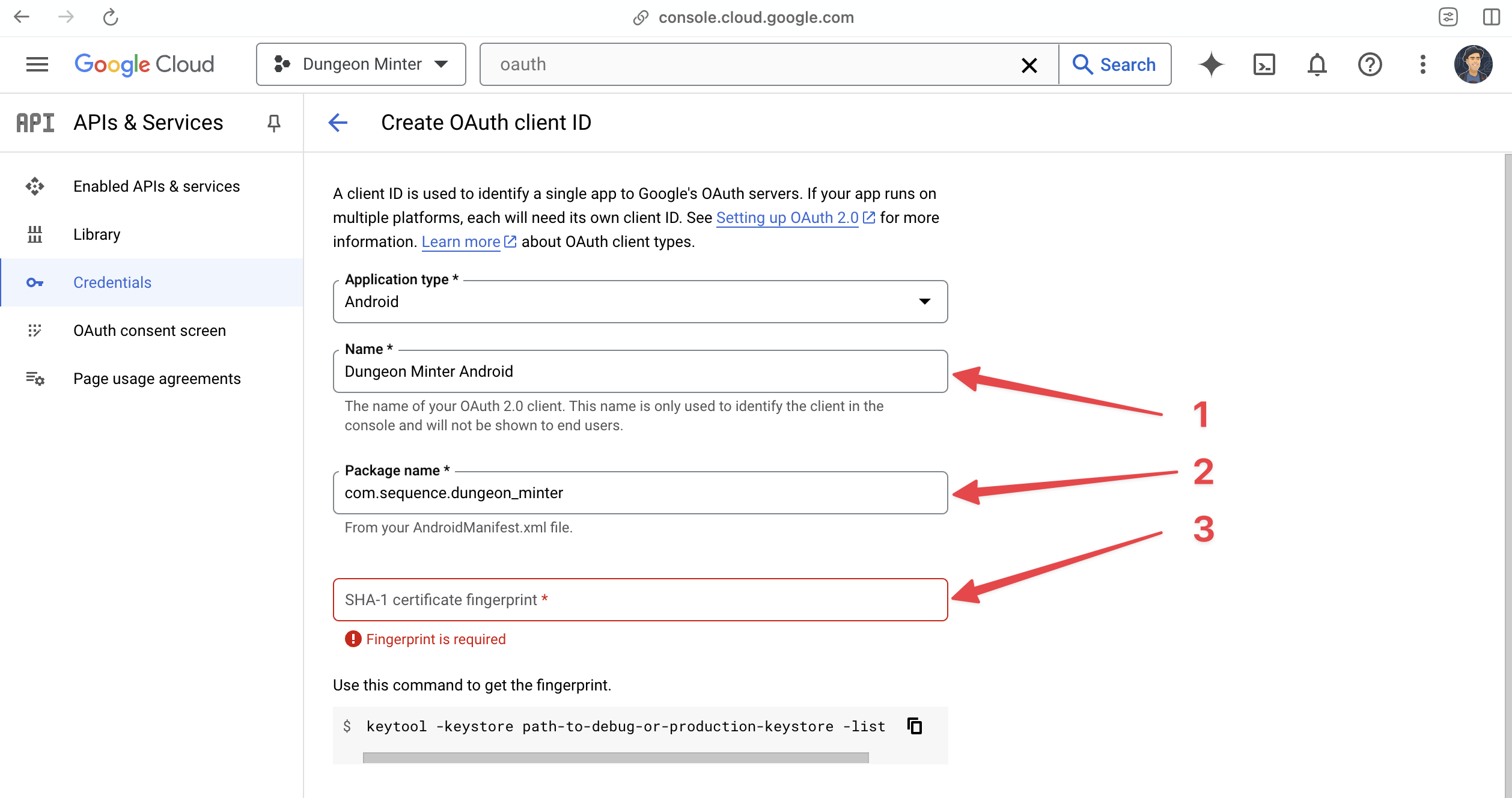
Configure iOS Application
If you are configuring your Client ID for an iOS application, you must provide the following:- Application name
- Bundle ID: This is the unique bundle identifier for your iOS project.
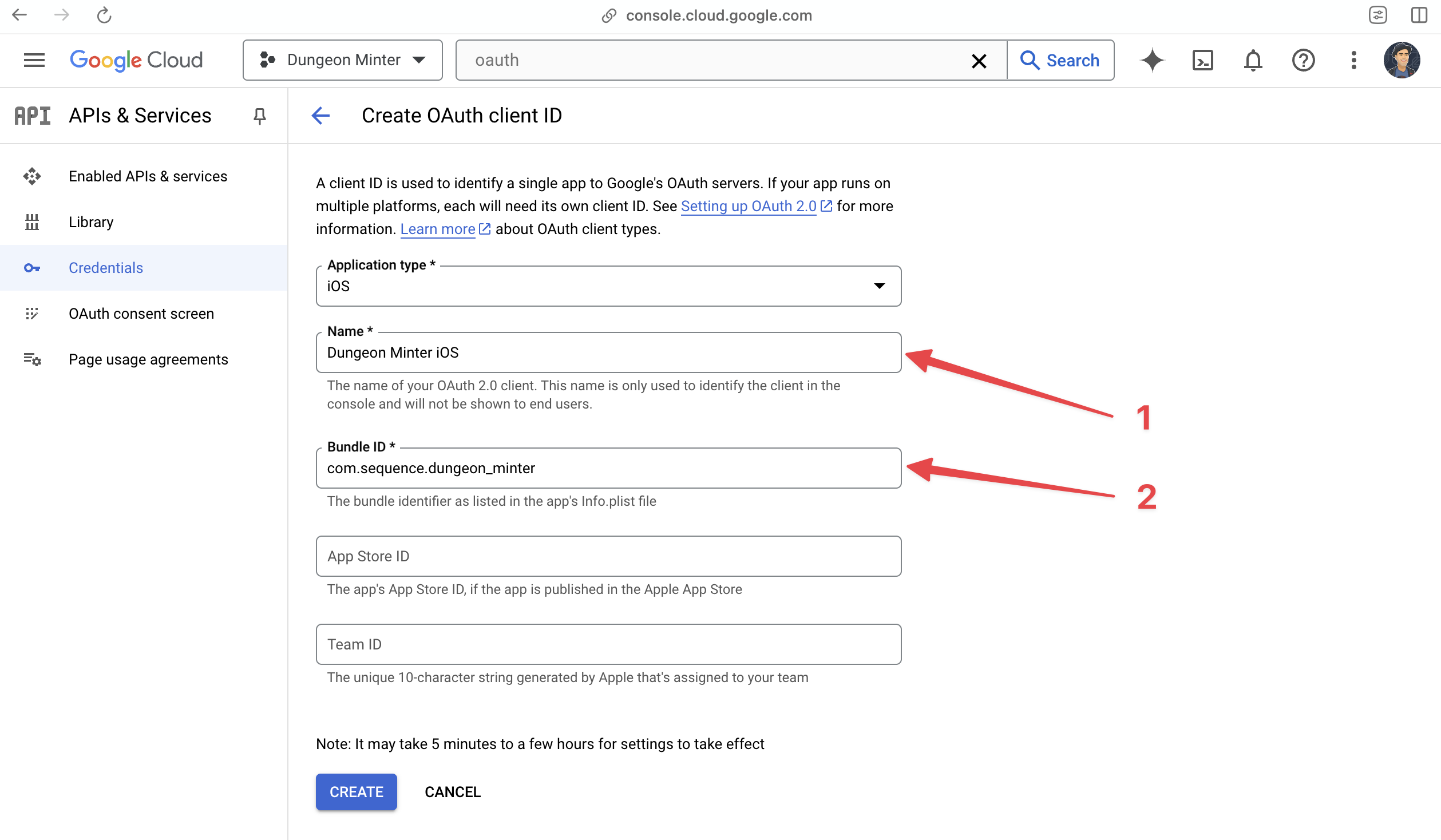
Get Your Client ID
Once you create your application, you will be presented with a Client ID. Copy it and use it as your login provider Client ID in Sequence Builder.